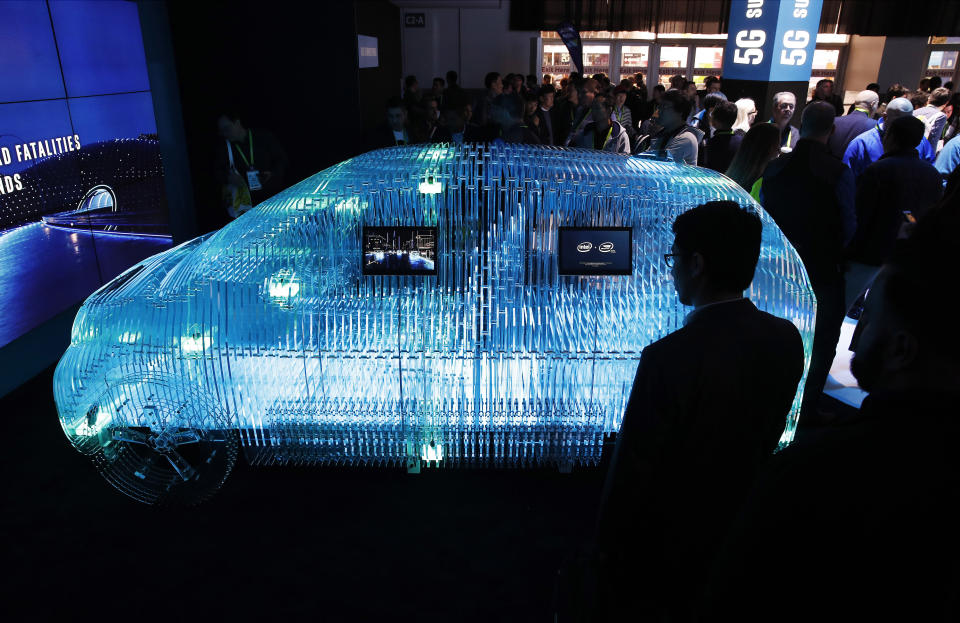Ford picks this chip giant's autonomous driving outfit in race against Tesla
Intel’s (INTC) autonomous driving unit Mobileye continues to park some big business wins in its garage.
Mobileye announced Monday that auto giant Ford (F) has selected it as the supplier of vision sensing technology for the company’s driver assistance systems. The technology will support Level 1 and Level 2 autonomous driving systems for Ford vehicles globally. While the two companies have worked together since at least 2018, the deal marks the first time Ford is committing to Mobileye’s technology for the entire lifecycle of its next generation vehicles such as the upcoming Mustang Mach-E and F-150.
Some of Mobileye’s technology that will find its way into Ford’s include a lane-keeping system, auto high beam headlamps, pre-collision assist with automatic emergency braking, intelligent-adaptive cruise control, and active-drive assistant.
To be sure, the partnership signals that Ford continues to be all in on a future of autonomous driving.
Back in 2017, Ford said it would invest $1 billion in autonomous tech company Argo AI over the course of five years. In June of this year, as part of Ford’s alliance with Volkswagen, the German automaker invested $2.6 billion into Argo AI. Both companies plan to use Argo’s technology for its self-driving platforms for cars in the U.S. and Europe.
As for Intel’s Mobileye — which Intel purchased for $15.3 billion in 2017 — it remains a good story inside of the chipmaker. Last week, Mobileye received approval to perform testing of autonomous vehicles in urban and rural areas throughout Germany. The new permit will allow testing of vehicles going up to 81 mph.

Earlier this month, Mobileye inked a deal with Japanese transport operator Willer to develop a fleet of robotaxis. Testing on public roads in Japan is expected to begin in 2021. A full AV ride-hailing fleet is expected to debut in 2023 under the deal.
Meanwhile, the Mobileye business has doubled in revenue since Intel acquired it as the company consolidates a market that also includes Google heavyweight Waymo. The business stands to ink more deals amid Intel’s recent purchase of urban mobility platform Moovit for $900 million. Moovit’s traffic data will bolster Mobieye’s capabilities.
Intel CEO Bob Swan remains very bullish on the platform’s future as a way to improve safety on roads and reduce congestion.
“Our aspirations have also grown quite a bit in terms of the role that we in technology can play so that vehicles can move safely,” Swan said on Yahoo Finance’s The First Trade.
Brian Sozzi is an editor-at-large and co-anchor of The First Trade at Yahoo Finance. Follow Sozzi on Twitter @BrianSozzi and on LinkedIn.
Coca-Cola CEO: here’s what our business looks like right now
Dropbox co-founder: the future of work will be all about this
Follow Yahoo Finance on Twitter, Facebook, Instagram, Flipboard, SmartNews, LinkedIn, YouTube, and reddit.

 Yahoo Finance
Yahoo Finance 